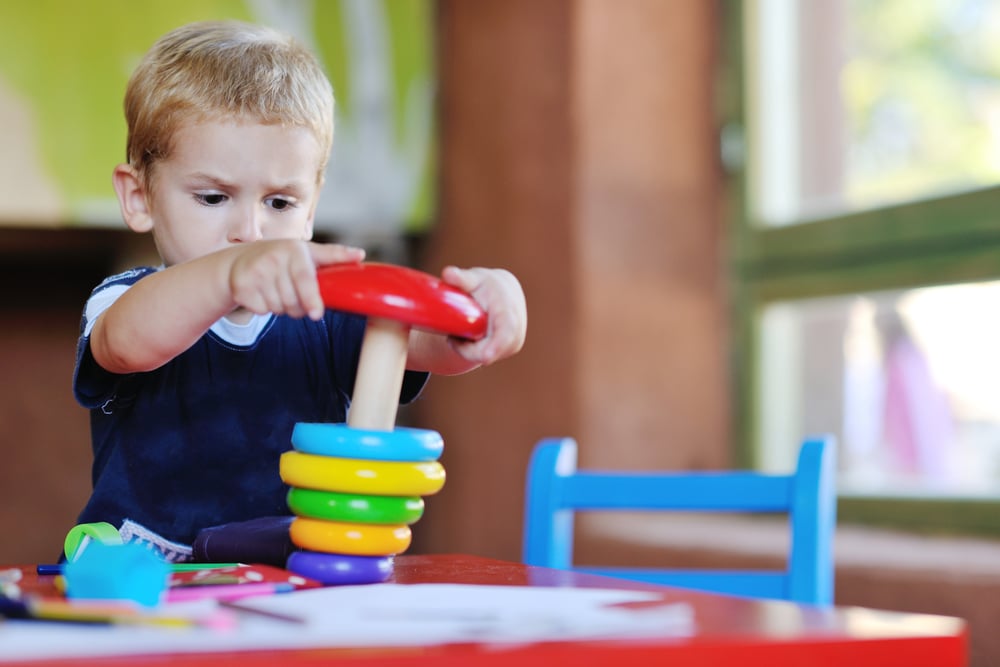Share this
monitoring blood lead levels using VAMS
by James Rudge, PhD, Technical Director, Trajan on Apr 17, 2023 9:00:00 AM
An article by Anthony Breton et al at the Institut National de Sante´ Publique du Que´bec (INSPQ) in Canada published in the January 2023 edition of Bioanalysis, discussed the development of a blood lead level assay using Mitra® microsampling devices with VAMS® technology. The paper is entitled “Method development for the quantification of lead levels in whole blood sampled on Mitra® with VAMS® tips by inductively coupled plasma-MS/MS.”
This study showed excellent stability of lead in dried blood collected on Mitra devices and minimized any lead contamination of the device tips. The group concluded that devices based on VAMS may be “a useful alternative sampling approach for further research on blood lead analysis and possibly for many other trace elements.”  Toxic lead exposure comes from many sources
Toxic lead exposure comes from many sources
Lead: A Dangerous Poison That Impacts People Around the Globe
In August 2022, the World Health Organization (WHO) reported that lead toxicity is one of the top 10 chemical elements of concern and is the underlying cause of 1 million annual deaths globally. They recommended that action was needed to protect children, women of reproductive age, and workers.
Indeed, according to an article published the same year by the United Nations agency UNICEF, in Bangladesh alone, up to 35 million children have blood lead levels (BLL) that are dangerously high, posing a risk of irreparable damage to their health.
Toys can be a source of lead exposure in children
One issue associated with lead exposure is that it is a cumulative heavy metal toxin that is distributed in many parts of the body, including the brain, kidneys, bones and liver. This cumulative effect can lead to several health concerns, including kidney damage and impaired development of the nervous system.
Moreover, because lead accumulates in bones and teeth, the heavy metal is released from the bones during pregnancy, posing an exposure risk to the developing fetus. Indeed, children absorb 4-5 times more lead than adults, which puts them more at risk. Biomonitoring of pregnant women and children for lead exposure is, thus, critically important.
Sources of Lead Exposure
There are many sources of lead exposure, such as the burning of materials containing the toxic metal and dusts contaminated with lead that may be inhaled. Although the source of the majority of lead exposure or contamination is lead acid batteries, the WHO lists the following additional sources of lead contamination:
- pigments and paints
- solder, stained glass, and lead crystal glass ware
- ammunition
- ceramic glazes
- jewelry
- toys
- some cosmetics, such kohl and sindoor
- traditional medicines used in countries such as India, Mexico, and Vietnam
- drinking water delivered through lead pipes
A Consideration of Less Invasive Blood Collection for Measuring Blood Lead Levels (BLL)
Like the majority of analytes measured from blood, BLL is currently measured through venipuncture, is collected into specimen tubes by trained phlebotomists. Typically, several mL of blood are collected per tube, however, the majority of this blood is often wasted because modern analyzers in labs require only a tiny amount of blood to conduct the vast majority of clinical tests.
Moreover, many people find venipuncture blood draws to be uncomfortable and stressful experiences. Further, because the collection of venous blood requires a trained phlebotomist working in a clinical setting, and because wet blood samples typically require cryogenic transport to a laboratory, traditional venipuncture blood collection is not always the most practical or cost-effective choice.
However, as discussed above, monitoring BLL in populations is critical to mitigate the public health concern posed by lead exposure. It appears that collecting finger-stick capillary blood microsamples for easy shipping and dried blood analysis really is a more practical solution. It also is a far more convenient collection method for use in pediatric studies, of particular importance since children at highest risk for lead exposure and lead poisoning.
Development and Validation of a BLL Method from VAMS Microsamples
With these considerations in mind, the research team at INSPQ decided to develop a BLL assay from dried VAMS samples. The reason they chose VAMS was because, as reported by many other research groups, the Mitra devices are based on volumetric absorptive microsampling, so they eliminate certain volumetric biases seen when using conventional dried blood spot cards or filter papers.
Nevertheless, developing a blood lead assay is not a straightforward venture due to possible environmental contamination of the Mitra microsamplers. Indeed, the INSPQ group commented that the reported thresholds for BLL in children are 0.48 μmol/L and for adults 0.90 μmol/L. Thus, contamination of the microsamplers would be a concern at such low levels and the VAMS tips would need to be as metal-free as possible to minimize any false positives.
Lead Level Study Methods and Findings
- A BLL assay, employing inductively coupled plasma–MS/MS (ICP-MS/MS), was fully developed and validated (ISO 17025 guidelines.) for 30 µL Mitra® devices with VAMS® technology and then compared to venous blood levels.
- A matrix matched calibration curve on the VAMS samples was employed.
- Good stability for Pb at room temperature was observed on dried blood Mitra-VAMS samples.
- Using a novel approach employing nitric acid and sonication, the VAMS tips on the Mitra devices were washed and then dried to minimize any trace element contamination.
- With an initial cohort of 29 volunteers, capillary samples using the washed VAMS tips were compared to simultaneously collected venous samples. The results showed that there was an average 40% higher BLL on the blood samples collected on VAMS tips compared to venous blood samples.
- It was concluded that a possible source contamination may have been from the fingers and the sampling site. Indeed, there are many sources of metal contamination that can contaminate fingers, so the researchers decided to test this by asking the subjects to thoroughly wash their hands with soap and water prior to capillary sampling.
- A second cohort (N=28) was studied, and thorough handwashing was employed, resulting in a much-reduced bias (>75%).
Lead Study Authors’ Conclusions
- Washing the VAMS tips prior to sampling significantly reduced lead contamination.
- The developed ICP-MS/MS method gave enough sensitivity for analysis of trace Pb levels from VAMS microsamples.
- Stability of the microsamples were excellent, mitigating the need from cryogenically stored and transported venous samples.
- Future work will be done to develop a multi-element screen.
- The authors stated, “The results overall are promising for the use of Mitra-VAMS as an alternative blood sampling approach to venipuncture.”
Neoteryx Comments
The work developed at INSPQ showed that it is possible to develop a capillary BLL assay, which minimized environmental lead contamination of the VAMS tips on Mitra devices as well as on fingers. As a result, the implication is that it is now possible to conduct epidemiological BLL studies to identify most at-risk cohorts.
This work also supplies the data needed to employ measures that remove the source of contamination, allowing for children to develop without the deleterious effects of heavy metals impeding their health and natural growth.
This article was summarized for our readers by James Rudge, PhD, Technical Director. This is curated content. To learn more about the important research outlined in this blog, visit the original article in Future Science-Bioanalysis.
Image Credits: Shutterstock, Neoteryx, Trajan

Share this
- Microsampling (206)
- Research, Remote Research (119)
- Venipuncture Alternative (105)
- Clinical Trials, Clinical Research (83)
- Mitra® Device (73)
- Therapeutic Drug Monitoring, TDM (51)
- Dried Blood Spot, DBS (39)
- Biomonitoring, Health, Wellness (30)
- Infectious Disease, Vaccines, COVID-19 (24)
- Blood Microsampling, Serology (23)
- Omics, Multi-Omics (21)
- Decentralized Clinical Trial (DCT) (20)
- Specimen Collection (18)
- Toxicology, Doping, Drug/Alcohol Monitoring, PEth (17)
- Skin Microsampling, Microbiopsy (14)
- hemaPEN® Device (13)
- Preclinical Research, Animal Studies (12)
- Pharmaceuticals, Drug Development (9)
- Harpera Device (7)
- Industry News, Microsampling News (5)
- Antibodies, MAbs (3)
- Company Press Release, Product Press Release (3)
- Environmental Toxins, Exposures (1)
- July 2025 (1)
- May 2025 (1)
- April 2025 (2)
- December 2024 (2)
- November 2024 (1)
- October 2024 (3)
- September 2024 (1)
- June 2024 (1)
- May 2024 (1)
- April 2024 (4)
- March 2024 (1)
- February 2024 (2)
- January 2024 (4)
- December 2023 (3)
- November 2023 (3)
- October 2023 (3)
- September 2023 (3)
- July 2023 (3)
- June 2023 (2)
- April 2023 (2)
- March 2023 (2)
- February 2023 (2)
- January 2023 (3)
- December 2022 (2)
- November 2022 (3)
- October 2022 (4)
- September 2022 (3)
- August 2022 (5)
- July 2022 (2)
- June 2022 (2)
- May 2022 (4)
- April 2022 (3)
- March 2022 (3)
- February 2022 (4)
- January 2022 (5)
- December 2021 (3)
- November 2021 (5)
- October 2021 (3)
- September 2021 (3)
- August 2021 (4)
- July 2021 (4)
- June 2021 (4)
- May 2021 (4)
- April 2021 (3)
- March 2021 (5)
- February 2021 (4)
- January 2021 (4)
- December 2020 (3)
- November 2020 (5)
- October 2020 (4)
- September 2020 (3)
- August 2020 (3)
- July 2020 (6)
- June 2020 (4)
- May 2020 (4)
- April 2020 (3)
- March 2020 (6)
- February 2020 (3)
- January 2020 (4)
- December 2019 (5)
- November 2019 (4)
- October 2019 (2)
- September 2019 (4)
- August 2019 (4)
- July 2019 (3)
- June 2019 (7)
- May 2019 (6)
- April 2019 (5)
- March 2019 (6)
- February 2019 (5)
- January 2019 (8)
- December 2018 (3)
- November 2018 (4)
- October 2018 (7)
- September 2018 (6)
- August 2018 (5)
- July 2018 (8)
- June 2018 (6)
- May 2018 (5)
- April 2018 (6)
- March 2018 (4)
- February 2018 (6)
- January 2018 (4)
- December 2017 (2)
- November 2017 (3)
- October 2017 (2)
- September 2017 (4)
- August 2017 (2)
- July 2017 (4)
- June 2017 (5)
- May 2017 (6)
- April 2017 (6)
- March 2017 (5)
- February 2017 (4)
- January 2017 (1)
- July 2016 (3)
- May 2016 (1)
- April 2016 (2)


No Comments Yet
Let us know what you think